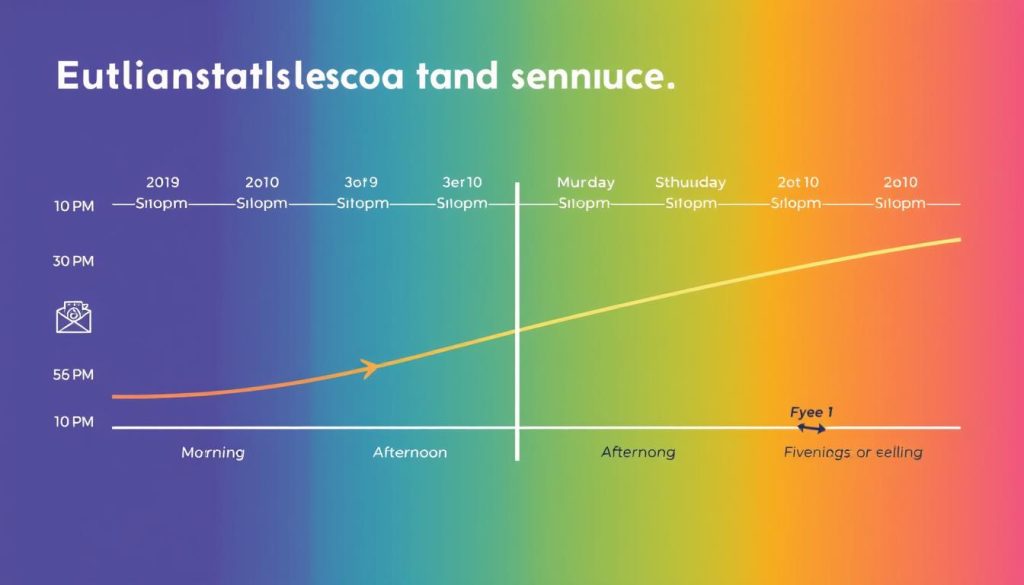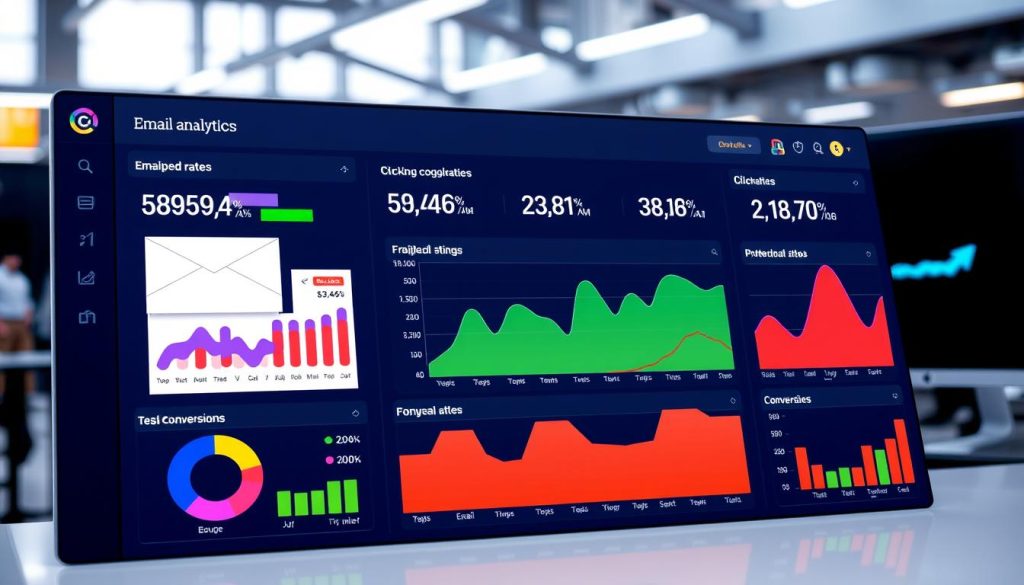In the world of business brokerage, staying ahead means using new ways to find leads. Cold emailing is a key tool for brokers to reach out to sellers and buyers. But making emails that work well is an art that needs skill and strategy.
This guide will show you advanced cold email strategies for business brokers. We’ll talk about making great subject lines, creating targeted lists, and finding the best time to send emails. These are the main parts of a successful cold email campaign.
If you’re an experienced broker or just starting, learning cold emailing can boost your business. Let’s explore how to improve your email outreach and grow your business.
Key Takeaways
- Understand the importance of cold emails for business brokers in lead generation
- Learn how to craft the perfect cold email with personalization and a strong subject line
- Discover techniques for building a targeted email list of ideal clients
- Optimize the timing and frequency of your cold emails for maximum impact
- Ensure compliance with legal regulations like CAN-SPAM when sending cold emails
- Leverage automation tools to streamline your cold email outreach process
Understanding the Importance of Cold Emails for Brokers
In the fast-paced world of business brokerage, cold emailing is a key tool for lead generation and client acquisition. It uses email’s reach and efficiency to connect with potential sellers and buyers. This helps build valuable relationships that drive business growth.
Why Cold Emails Matter
Cold emails have many benefits for business brokers:
- Targeted outreach to potential clients
- Cost-effective compared to traditional marketing methods
- Ability to personalize messages and build rapport
- Scalability and automation potential
“Cold emailing is not about blasting generic messages to a large audience. It’s about strategically engaging with the right prospects and providing value upfront.”
Benefits of Cold Emailing
When done right, cold emailing can bring big benefits to business brokers:
| Benefit | Description |
|---|---|
| Increased lead generation | Reach a wider pool of potential clients and generate qualified leads |
| Improved client acquisition | Convert leads into clients by nurturing relationships through personalized communication |
| Enhanced relationship building | Establish trust and credibility with prospects through valuable content and consistent follow-up |
By understanding cold emails’ importance, business brokers can grow their network. They can attract high-quality clients and close more deals.
Crafting the Perfect Cold Email
Writing effective cold emails is key for your business brokerage. It’s all about email copywriting. By making your messages compelling and personal, you grab potential clients’ attention. This boosts your chances of getting a positive response.
- A clear and concise subject line that makes people want to open it
- A personalized greeting that shows you’ve done your homework
- A strong opening line that shows the value you offer
- Details about your services that match what the recipient needs
- A clear call-to-action to get them to act
Personalization Techniques
Personalization is vital in cold emailing. Addressing the recipient by name and mentioning their company or industry helps. It shows you understand their challenges and builds trust.
“Personalized email messages improve click-through rates by an average of 14% and conversions by 10%.” – Aberdeen
Here are some ways to personalize your emails:
- Use the recipient’s name in the subject line and greeting
- Refer to their company, industry, or recent news
- Tailor your message to their specific needs or goals
- Mention a mutual connection or shared interest
Subject Line Mastery
Your email’s subject line is crucial. It’s the first thing people see. A good subject line grabs attention, shows value, and avoids spam filters.
Here are some tips for great subject lines:
- Keep it short and to the point – aim for 50 characters or less
- Use action words that create a sense of urgency
- Make the subject line personal with the recipient’s name or company
- Avoid all caps, too much punctuation, or spammy words like “free” or “guarantee”
- Try out different subject lines to see what works best
By focusing on personal, compelling, and well-written cold emails, you can connect with more potential clients. This helps grow your business brokerage.
Building a Targeted Email List
To make your cold email campaigns better, focus on targeted email lists that match your ideal client profile. Narrowing down your audience lets you send messages that really speak to them. This makes it more likely they’ll engage and convert.
Identifying Your Ideal Clients
First, figure out who your perfect client is. Think about:
- Industry and niche
- Company size and revenue
- Geographic location
- Decision-maker roles and titles
With a clear idea of your ideal client, you can start finding contacts that fit the bill.
Tools for List Building
Use list building tools to find and check email addresses easily. Some top picks are:
| Tool | Key Features | Pricing |
|---|---|---|
| Hunter.io | Domain search, email verification | Free plan, paid plans from $49/month |
| ZoomInfo | Extensive B2B database, advanced search filters | Custom pricing based on needs |
| Voila Norbert | Email finder, verification, contact enrichment | Pay-as-you-go or subscription plans from $49/month |
These tools help you build targeted lists fast and ensure the emails are good to go.
Maintaining List Hygiene
Keep your email lists clean and up-to-date to ensure good delivery rates. Get rid of bad addresses to protect your sender reputation.
“A clean email list is the foundation of a successful cold email campaign. Prioritize quality over quantity to maximize your results.” – John Smith, Business Brokerage Expert
By focusing on quality and targeting, you’ll create cold email campaigns that really work for your business brokerage.
Timing and Frequency of Cold Emails
To make your cold email outreach better, knowing the best times and how often to send is key. Sending emails when people are most likely to read them can really help. This way, you can get more potential clients to respond and close more deals.
Best Times to Send Emails
Research shows the best times to send cold emails are during the week, especially on Tuesdays and Thursdays. The best hours are usually between 9:00 AM and 11:00 AM, or 1:00 PM and 3:00 PM, in the recipient’s time zone.

But, these times might not be perfect for everyone. It depends on who you’re emailing and what industry they’re in. Try different times and see what works best for your audience.
Following Up Without Being Annoying
Good follow-up strategies are key to keeping leads interested and closing deals. But, you need to be careful not to bother people too much. Wait 3-5 business days before your first follow-up, and don’t send more than 3-4 emails in 2-3 weeks.
When you follow up, add value and address any concerns. Don’t be generic or pushy. Instead, make your emails personal and show you really care about their needs.
“The fortune is in the follow-up.” – Jim Rohn
By getting your email frequency and follow-up right, you can earn trust and credibility. This can lead to more successful cold email campaigns and more business opportunities.
A/B Testing Your Cold Emails
As a business broker, you know how crucial it is to make your cold email campaigns work better. A/B testing is a key way to boost your email’s performance. It lets you see what your audience likes best and make choices based on data.
What Is A/B Testing?
A/B testing, or split testing, compares two email versions to see which one does better. You can test things like subject lines, content, calls-to-action, or when you send the email. The aim is to find the best mix of elements for higher open rates, clicks, and conversions.
Through A/B tests, you learn what your audience likes and does. This helps you make smart choices for your email strategy. You can keep improving your campaigns for better results.
Metrics to Measure Success
When you A/B test your cold emails, it’s important to watch the right metrics. Key ones include:
- Open rates: Shows how well your subject lines and preview text grab attention.
- Click-through rates (CTR): Tells you how engaging your content and call-to-action are.
- Conversion rates: Shows how well your email meets its goal, like scheduling a call.
“A/B testing is not about finding the ‘best’ version, but rather about learning what works and what doesn’t for your specific audience.” – Peep Laja, CXL
By watching these metrics and comparing A/B test results, you can spot trends. This helps you keep making your cold email campaigns better.
Legal Considerations for Cold Emailing
As a business broker, you must understand the legal side of cold emailing. This is to keep your reputation safe and avoid fines. You need to know about the CAN-SPAM Act in the U.S. and the General Data Protection Regulation (GDPR) in the European Union.
Understanding CAN-SPAM Compliance
The CAN-SPAM Act guides commercial emails. It requires senders to:
- Include a clear opt-out mechanism
- Honor opt-out requests within 10 business days
- Provide a valid postal address in the email
- Avoid deceptive subject lines or “From” addresses
Not following the CAN-SPAM Act can lead to big fines. So, it’s key to know these rules and make sure your emails follow them.
Privacy Regulations to Watch
There are more privacy rules to keep in mind for cold emailing. The GDPR, for example, affects businesses that handle EU citizens’ data. It has rules like:
| GDPR Requirement | Description |
|---|---|
| Consent | Getting clear consent before using personal data |
| Right to Access | Letting people see their personal data |
| Right to Be Forgotten | Allowing people to ask for their data to be deleted |
| Data Portability | Helping people move their data to another service |
By keeping up with these and other privacy laws, you can keep your cold emailing legal. This protects your business from legal trouble.
“Email compliance is not just about avoiding penalties; it’s about respecting your recipients and building trust with potential clients.” – Jane Smith, Email Marketing Expert
Leveraging Automation Tools
In the fast-paced world of business brokerage, time is very valuable. By using email automation, brokers can make their outreach efforts more efficient. This boosts their productivity. Automation tools help you send personalized emails, schedule them, and track how well they do. All this saves a lot of time and resources.
Benefits of Email Automation
Email automation has many benefits for business brokers, including:
- Increased efficiency and time savings
- Improved consistency in messaging
- Enhanced personalization at scale
- Better sales enablement through targeted campaigns
- Detailed analytics for data-driven decision making
Brokers can focus on important tasks like building relationships and closing deals. Automation takes care of the repetitive tasks.
Recommended Tools for Brokers
Choosing the right email automation and productivity tools is key for success. Here are some top picks for business brokers:
| Tool | Key Features | Pricing |
|---|---|---|
| Mailchimp | Easy-to-use interface, customizable templates, A/B testing | Free plan, paid plans start at $11/month |
| HubSpot Sales Hub | Robust CRM integration, personalized sequences, detailed analytics | Starter plan at $50/month, more advanced plans available |
| Zendesk Sell | Powerful sales enablement features, mobile app, team collaboration tools | Team plan starts at $19/user/month |
“Email automation has been a game-changer for our brokerage. It’s allowed us to scale our outreach efforts while maintaining a personal touch with each prospect.” – Sarah Johnson, Business Broker
By adding these productivity tools to your workflow, you can improve your cold email strategy. This will help you get better results for your brokerage.
Analyzing and Improving Email Performance
To get the most out of your cold email campaigns, it’s key to check and tweak your email performance often. By watching important metrics and making smart choices based on data, you can keep getting better results. This helps your business brokerage succeed.
Tracking Open and Response Rates
It’s vital to keep an eye on your email open and response rates. The open rate shows how many people are checking your emails. The response rate tells you how many are actually replying. Use email analytics tools to get detailed insights into how your campaigns are doing.

By watching these rates closely, you can spot areas to improve and tweak your email strategy. For instance, if your open rate is low, try changing your subject lines or sending times. If not many are responding, work on making your emails more personal or engaging.
Making Data-Driven Decisions
To really shine at cold emailing, adopt a data-driven marketing mindset. This means using email analytics to guide your choices and improve your campaigns. By relying on data, you can make smarter decisions that lead to better outcomes.
“Data is the new oil. It’s valuable, but if unrefined it cannot really be used. It has to be changed into gas, plastic, chemicals, etc to create a valuable entity that drives profitable activity; so must data be broken down, analyzed for it to have value.” – Clive Humby, UK Mathematician and architect of Tesco’s Clubcard
Think about setting up a dashboard to track your email metrics over time. This lets you spot trends and patterns easily. You might track things like:
| Metric | Description |
|---|---|
| Open Rate | Percentage of recipients who opened your email |
| Click-Through Rate (CTR) | Percentage of recipients who clicked a link in your email |
| Response Rate | Percentage of recipients who replied to your email |
| Conversion Rate | Percentage of recipients who took a desired action, such as scheduling a call or making a purchase |
By regularly checking this data and making smart changes to your campaigns, you can keep getting better. Remember, cold emailing is a process that needs ongoing effort, analysis, and fine-tuning.
Real-Life Success Stories and Case Studies
To show the power of cold emailing for business brokers, let’s look at some real examples. These stories highlight how brokers use cold emails to grow their businesses and find great deals.
Successful Cold Email Campaigns
Brian Thompson, a top business broker in New York City, has a great success story. He used personalized and targeted cold emails to reach big clients in tech. His emails showed his expertise and success, leading to many deals and partnerships.
Brian’s story teaches us the value of making emails personal and focused on each prospect’s needs.
Lessons Learned from Other Brokers
Lisa Chen, a business broker in hospitality, also shared her cold emailing tips. She stressed the need for deep research and persistence. Lisa built trust and credibility by consistently adding value and staying in touch with her prospects.
Her success shows the importance of building relationships and being patient with cold emailing.
These real-life examples teach valuable lessons for business brokers. By learning from others’ successes and strategies, brokers can improve their cold emailing. Using cold emails, as these stories show, can lead to new chances and help businesses grow in the competitive brokerage world.
FAQ
What are the key components of an effective cold email for business brokers?
A good cold email for business brokers needs a catchy subject line and a personalized start. It should clearly state its value, have a strong call-to-action, and end with a professional signature. The goal is to catch the reader’s eye, show relevance, and encourage action.
How can business brokers build targeted email lists for their cold email campaigns?
Business brokers can create targeted email lists by knowing who they want to reach. They can use LinkedIn Sales Navigator or ZoomInfo to find these contacts. Keeping the list up-to-date and removing inactive contacts is also key. This ensures emails reach the right people.
What are the best times to send cold emails for maximum engagement?
Research shows the best times to send cold emails are Tuesday to Thursday, between 10 AM and 2 PM in the recipient’s time zone. But, it’s crucial to test different times to find what works best for your audience.
How can business brokers leverage email automation tools to improve their cold email strategies?
Email automation tools save time and boost productivity for business brokers. Tools like Mailchimp, Constant Contact, or HubSpot let brokers create templates, schedule emails, track results, and automate follow-ups. This keeps their outreach consistent and efficient.
What metrics should business brokers track to analyze and improve their cold email performance?
Business brokers should track open rates, click-through rates, response rates, and conversion rates. By monitoring these, they can spot areas for improvement and refine their strategies. This leads to better email campaign results.
How can business brokers ensure compliance with legal regulations like the CAN-SPAM Act when sending cold emails?
To follow the CAN-SPAM Act, business brokers must include an unsubscribe link in every email. They should also provide a valid postal address, avoid misleading subject lines, and promptly honor opt-out requests. Compliance protects their reputation and avoids legal trouble.
What are some effective ways for business brokers to personalize their cold emails?
Business brokers can personalize emails by using the recipient’s name and mentioning specific details about their business. They can also reference shared connections or interests. Tailoring the message to address the recipient’s unique needs or goals builds rapport and boosts engagement.


